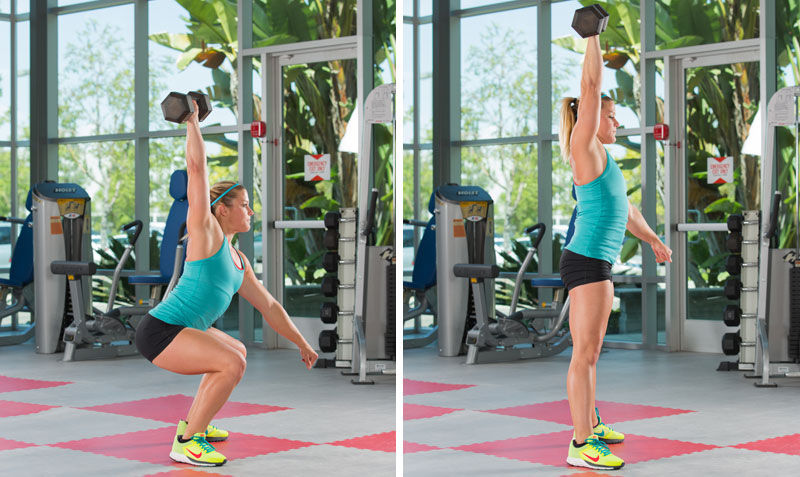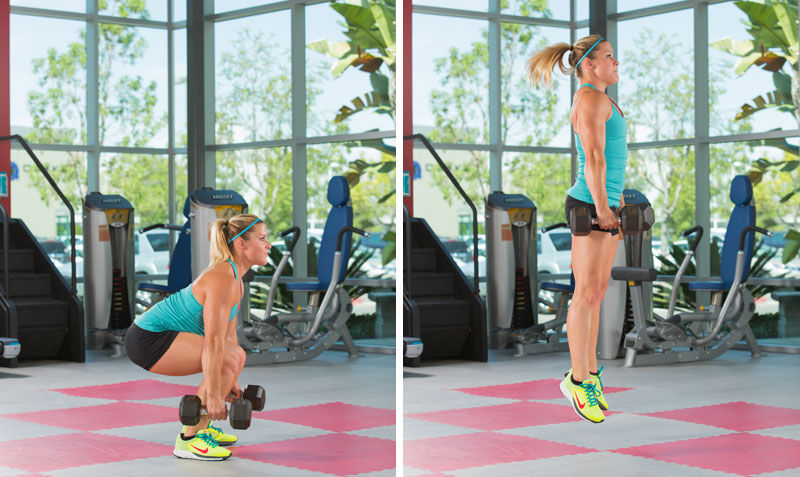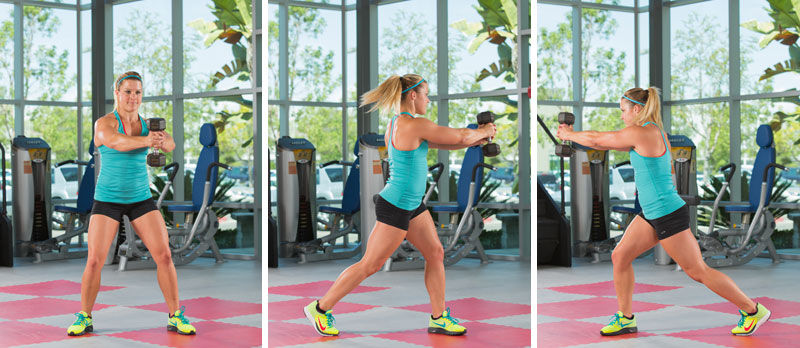Elite distance runners can cover the 26.2 miles of a marathon in less than two-and-a-half hours. Top triathletes complete the Ironman distance (2.4-mile swim, 112-mile bicycle ride and 26.2-mile run) in less than nine hours. The best sprinters can run 100 meters in less than 10 seconds. High-performing endurance athletes tend to be extremely lean with a limited quantity of muscle mass. On the other hand, runners who compete in short distance events, like the 100- or 200-meter sprints, are often extremely muscular. While all individuals who compete in running events are in good shape, endurance athletes and sprinters have different body types because of the way they use their bodies for their respective events.
Athletes who achieve success in endurance sports tend to have large amounts of the type I muscle fibers that are extremely efficient at aerobic metabolism, which is the process of converting fat and carbohydrates into energy to sustain muscle contractions over an extended period of time. Type I muscle fibers can improve aerobic efficiency via mitochondrial density, but do not achieve the same levels of size and definition as the larger type IIs. Compare that to explosive sprinting events that attract athletes with high levels of type II muscle fibers, which are responsible for fueling powerful muscle contractions via the anaerobic energy pathways. Sprinters train to be as powerful and fast as possible for their specific distances—not to enter bodybuilding competitions—yet many sprinters look like they could walk off the track and hold their own in a figure competition.
Losing weight and toning up are the two most common reasons for starting an exercise program. Many people who start exercising to achieve these goals often make distance running a key component of their workout programs. Sprinters and distance runners have such contrasting body types because of the way they train for their respective events. Endurance training can help improve aerobic efficiency and burn excess calories, but it is not that effective at promoting muscle definition. If your clients want to increase their levels of lean muscle mass and enhance their aesthetic appearance, it is worth considering these seven benefits of power training:
1. Power training can recruit large amounts of muscle fibers.
An individual motor unit is comprised of a motor neuron, which receives the commands for action from the central nervous system (CNS), and its attached muscle fibers. Motor units can be classified as fast-twitch or slow-twitch. Slow-twitch motor units have a low threshold for activation and low conduction velocities, and are best suited for long-duration activity requiring minimal force output because they attach to slow-twitch, type I muscle fibers. Fast-twitch motor units, by contrast, have a higher activation threshold, are capable of conducting signals at higher velocities and are better suited to anaerobic strength and power-based activities because they attach to type II muscle fibers, which have the ability to produce a high amount of force in a short period of time. Motor units are activated according to the all-or-none theory, which postulates that when a motor unit is activated it shortens all of its attached muscle fibers.
2. Power training can improve the magnitude and velocity of force production.
Muscle spindles are sensory receptors that identify changes in muscle length and then communicate those changes to the CNS to determine and produce the appropriate motor response. Muscle spindles lie parallel to individual muscle fibers and sense changes in muscle length as well as the velocity of the length change. When a muscle is lengthened, it creates a stretch on the muscle spindles, which respond by initiating a discharge of the alpha motor neurons. This, in turn, causes a reflexive contraction of the involved muscle.
3. Muscle force output is not based on the size of the muscle, but on intramuscular coordination, which is the efficiency at which the motor units activate individual fibers within a particular muscle.
Rate coding is the speed at which the CNS activates muscle motor units to create muscle contractions. Power training relies on the fast discharge of type II motor units and their attached muscle fibers. For the average client, power training can enhance the ability to perform many activities of daily living (ADL), such as carrying children, navigating a busy urban street or participating in a favorite recreational activity. For athletes, power training can be an effective method for enhancing performance. Both athletes and non-athletes can use power training to increase lean muscle mass and improve definition.
4. Power training relies on type II muscle fibers for generating high amounts of force in a short period of time.
Type II muscle fibers can metabolize energy from glycogen or stored adenosine triphosphate (ATP) without the presence of oxygen to meet the immediate need for force production. Sprinters rely on explosive power training to maximize their ability to generate high levels of muscle force in a brief amount of time; hence, they rely on the type II muscle fibers to do most of the work. The good news is that type II fibers are also responsible for providing a muscle with its shape and size, which makes power training an effective strategy for improving aesthetic appearance.
5. Power training can help older adults improve their quality of life and maintain functional independence during the later years of the aging process.
Type II muscle fibers not utilized during adulthood will atrophy and become dormant. Older adults can use safe power training exercises to activate type II muscle fibers, which increases lean muscle mass, improves dynamic balance (reducing the risk of falls) and enhances aesthetic appearance.
6. The mechanical and metabolic damage created by power training signals the body to increase levels of the anabolic hormones testosterone, growth hormone and insulin-like growth factor.
These are used to repair the damaged muscle fibers resulting in stronger, larger muscles capable of generating higher levels of force.
7. Power training can help develop stronger, more resilient connective tissue; specifically tendons, ligaments, fascia and joint capsules, which reduces the risk of injury from sprains or strains.
This fast and efficient workout was designed to enhance total-body power output and increase lean muscle mass.
Power Training Workout
Box Jump with Pre-jump

Doing a mini pre-jump loads elastic mechanical energy into your muscles, which helps develop more explosive power.
Use a stable jump box approximately knee-to-mid-thigh height. Stand facing the box approximately 2 feet away. Do a small jump forward—as you land try to allow your whole foot to hit the ground and quickly drop into a quarter squat to load your hips as you swing your arms behind you. Swing your arms forward and push your hips forward as you explosively push your feet into the ground to jump up to the box. Land on top of the box with both feet, pause, and then STEP DOWN to return to the starting position. Doing only 2 reps at a time will focus on explosive power and minimize fatigue. Perform 2 reps, rest for 10 to 15 seconds, and then do 2 more reps before resting again. Complete 6 to 8 reps total before resting for 2 minutes.
Make sure the box is on a stable surface that will not allow it to slip or move.
Perform 2 reps; rest for 10 to 15 seconds. Repeat for a total of 6 to 8 reps; rest for two minutes between sets and perform 3 to 4 sets.
Dumbbell Push Jerk
Hold one dumbbell in each hand so the dumbbells are resting on your shoulders with your palms facing the midline of your body. Stand with your feet hip-width apart. Quickly sink into your hips before explosively pressing your feet into the ground to jump up into the air. As you jump up push your arms straight overhead and cycle your legs so that you land with your right leg forward and left leg behind you. As you land sink into a lunge while keeping both arms directly overhead. Press your right foot into the ground and swing your left leg forward to move to a standing position with your feet hip-width apart. Slowly lower weights and repeat for 4 to 6 reps.
Use a weight that makes 4 to 6 reps challenging.
Complete 4 to 6 reps; rest 2 minutes between sets and perform 3 to 4 sets.
Dumbbell Snatch


Stand with your feet shoulder-width apart while holding a dumbbell in your right hand so that it is in the center of your body. Quickly dip your hips into a half-squat, keeping your spine straight and allowing the dumbbell to drop down between your legs. Explosively push your feet into the ground and press your hips forward as you snap your right arm straight up the front of your body (the dumbbell should travel in a straight line). As the dumbbell passes your shoulders, drop your hips into a squat as you punch your right arm straight into the air. Finish in a lowered-squat position with your right arm extended overhead. Slowly move into the standing position, lower your right arm and repeat for 4 to 6 repetitions before switching arms.
Use a weight that makes 4 to 6 reps challenging, using one arm at a time. Complete 4 to 6 reps; rest 2 minutes between sets (both arms = one set) and perform 3 to 4 sets.
Dumbbell Squat Jumps

Stand with your feet hip-width apart while holding one dumbbell in each hand so that your palms are facing the midline of your body. Keep your spine long and your chest raised as you quickly sink into your hips. Explosively press your feet into the ground and push your hips forward to jump up into the air. Keep your arms by your sides as you develop the power for the jump from your legs. Land softly, quickly sink into the hips and repeat for 4 to 6 reps.
Use moderately heavy dumbbells. Complete 4 to 6 reps; rest 2 minutes between sets and perform 3 to 4 sets.
Dumbbell Explosive Hip Rotations

Stand with your feet shoulder-width apart while holding one dumbbell vertically in both hands so that your fingers are laced around one another. Hold the dumbbell in front of your body at approximately chest height and maintain a tall spine. Press your right foot into the ground to rotate to your left around your left hip. Next, press your left foot into the ground to rotate to your right around your right hip. Move fast and explosively so that your hips and shoulders turn at the same time and you are rotating on the balls of your feet.
Use a moderately heavy dumbbell. Complete 10 to 12 reps on each side of the body; rest 2 minutes and perform 3 to 4 sets.




 by
by 






 by
by